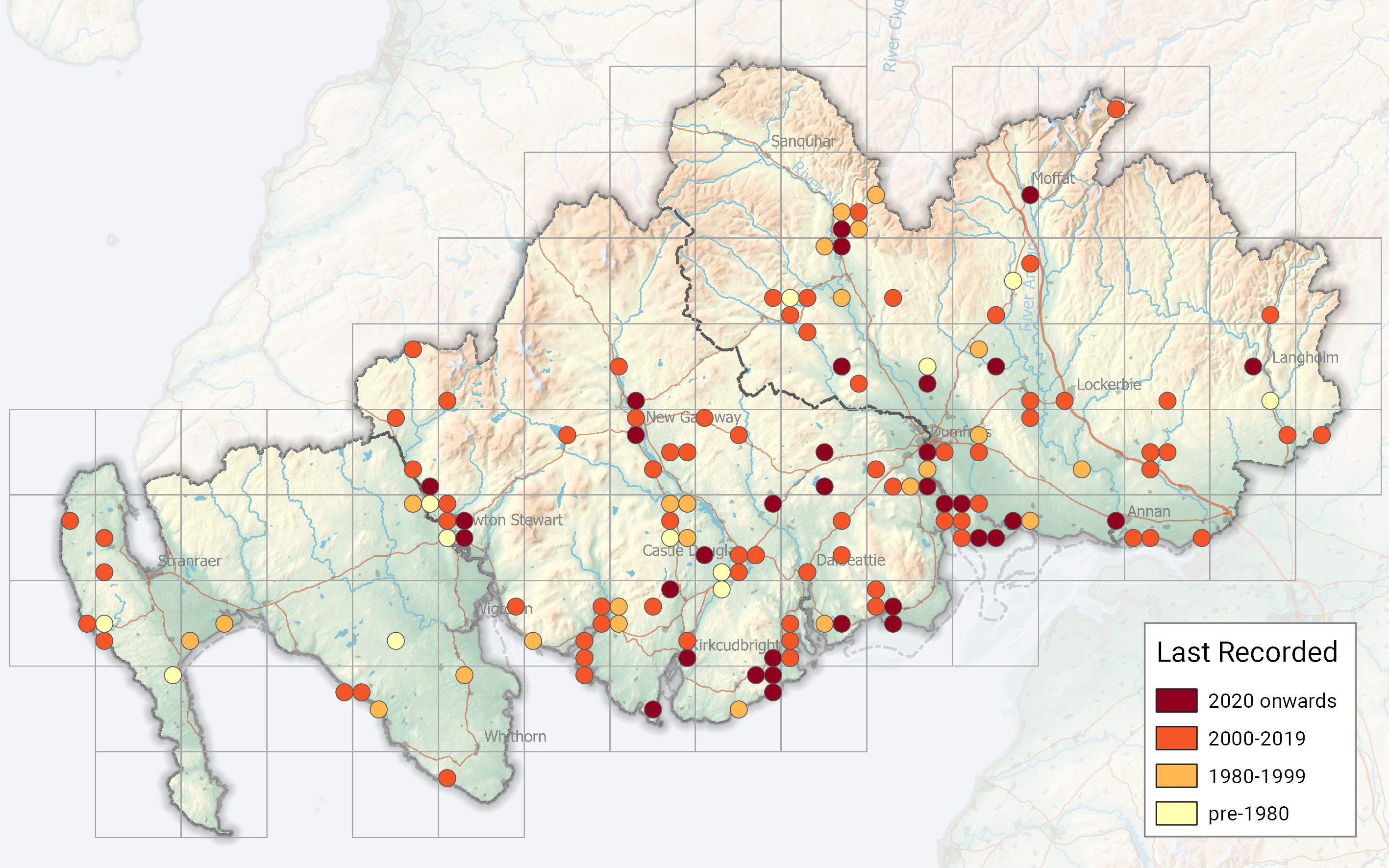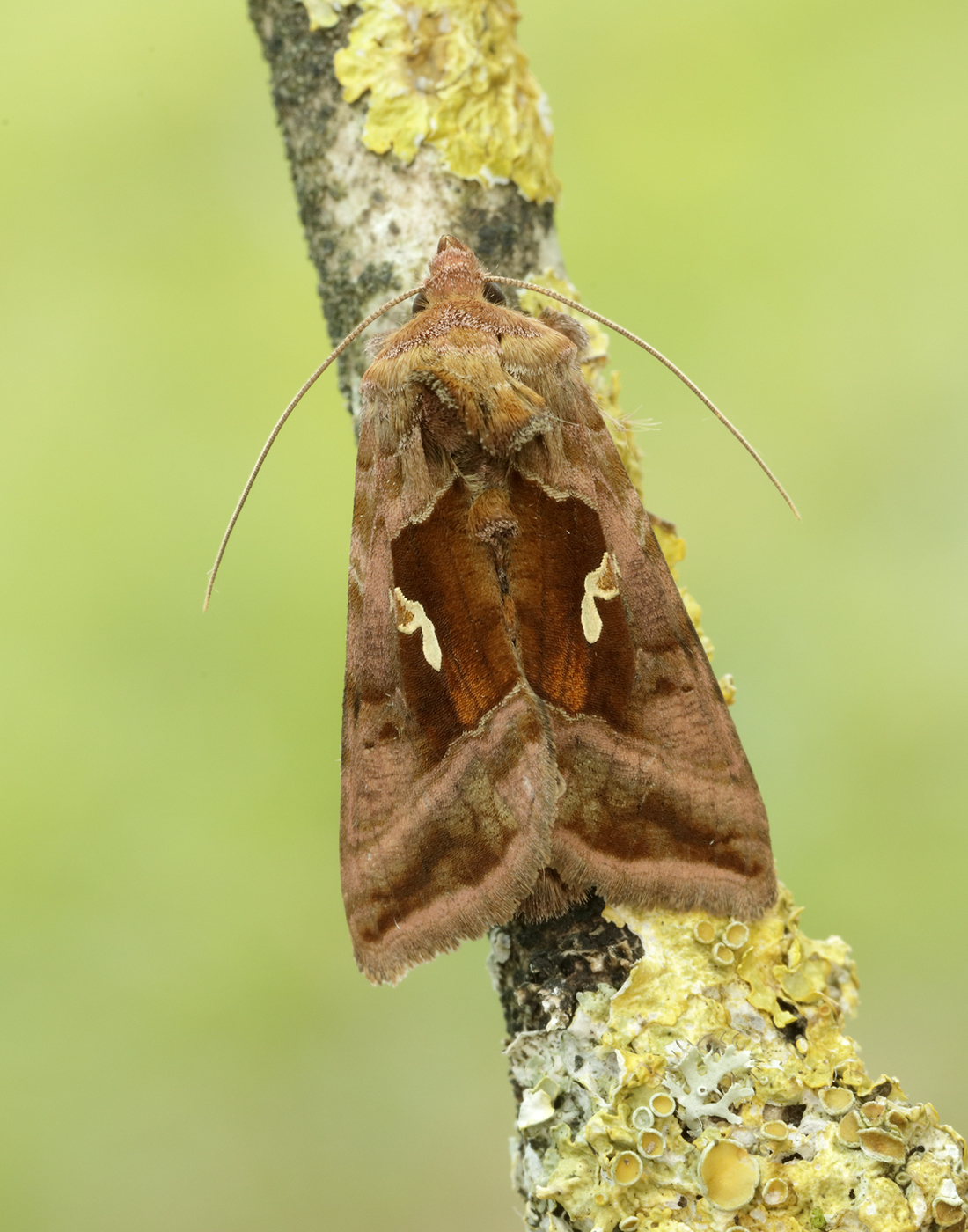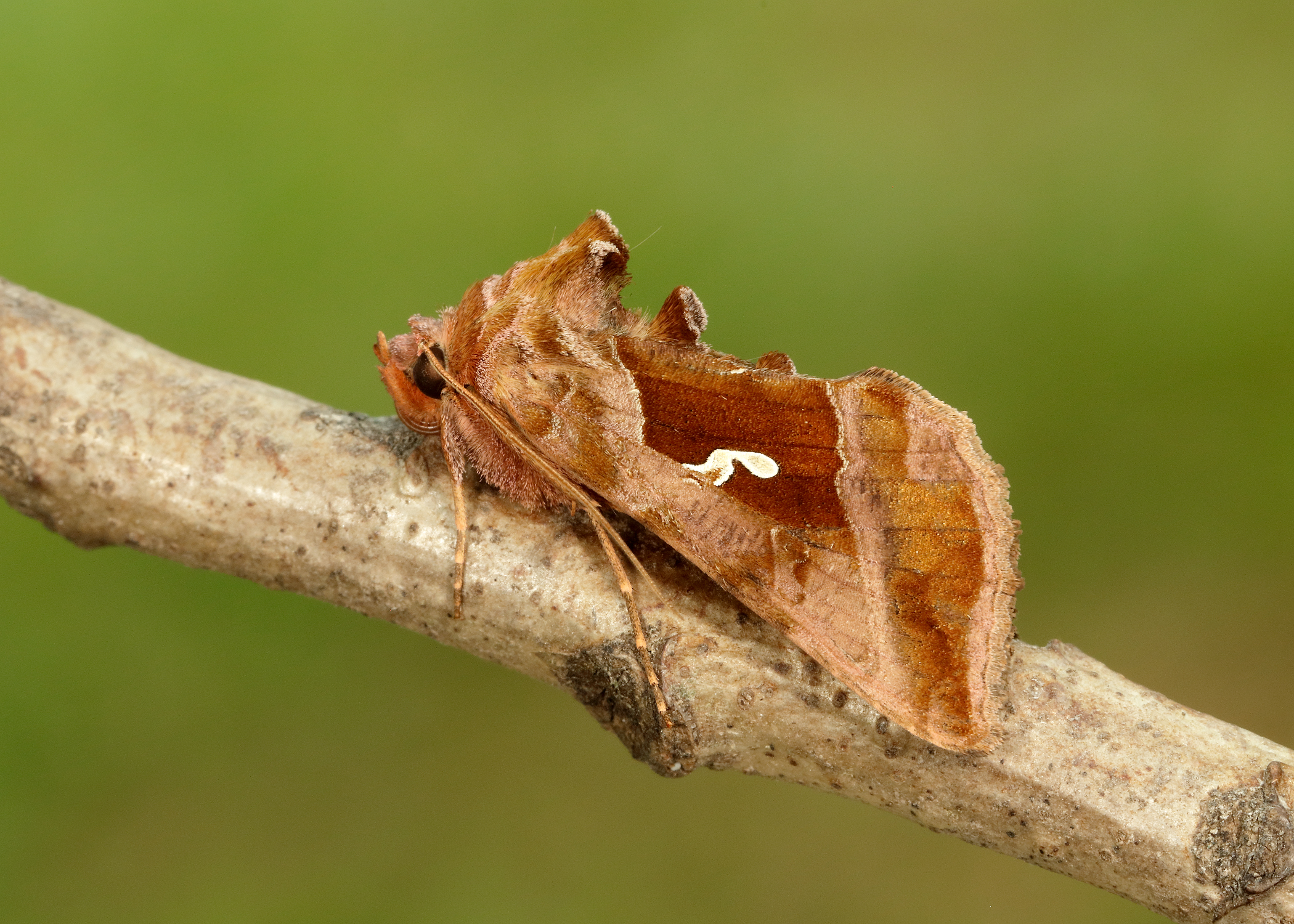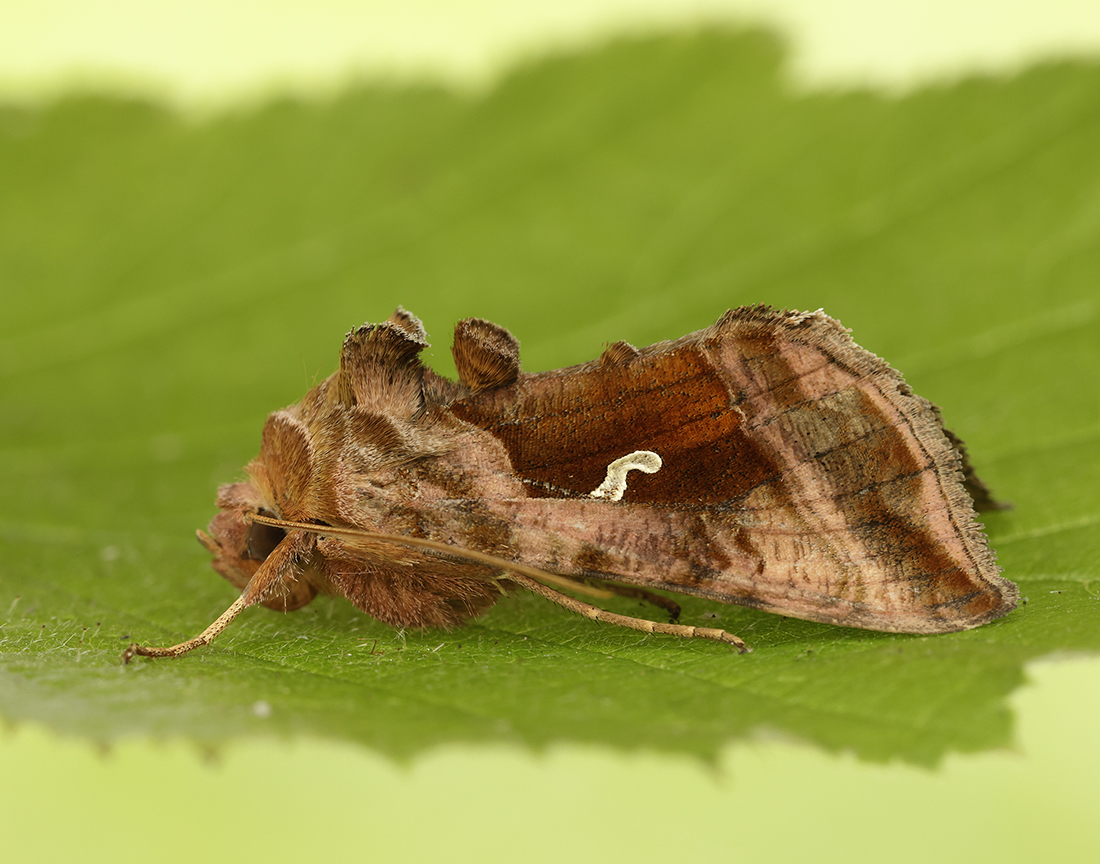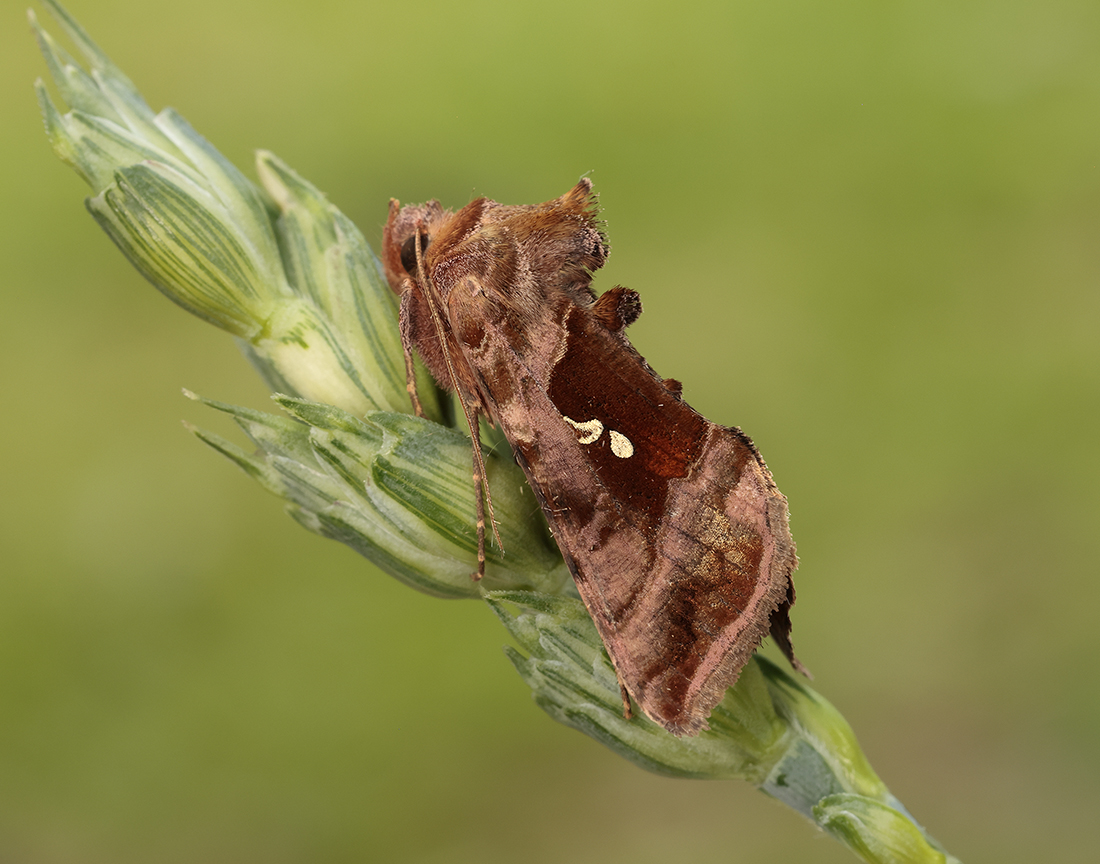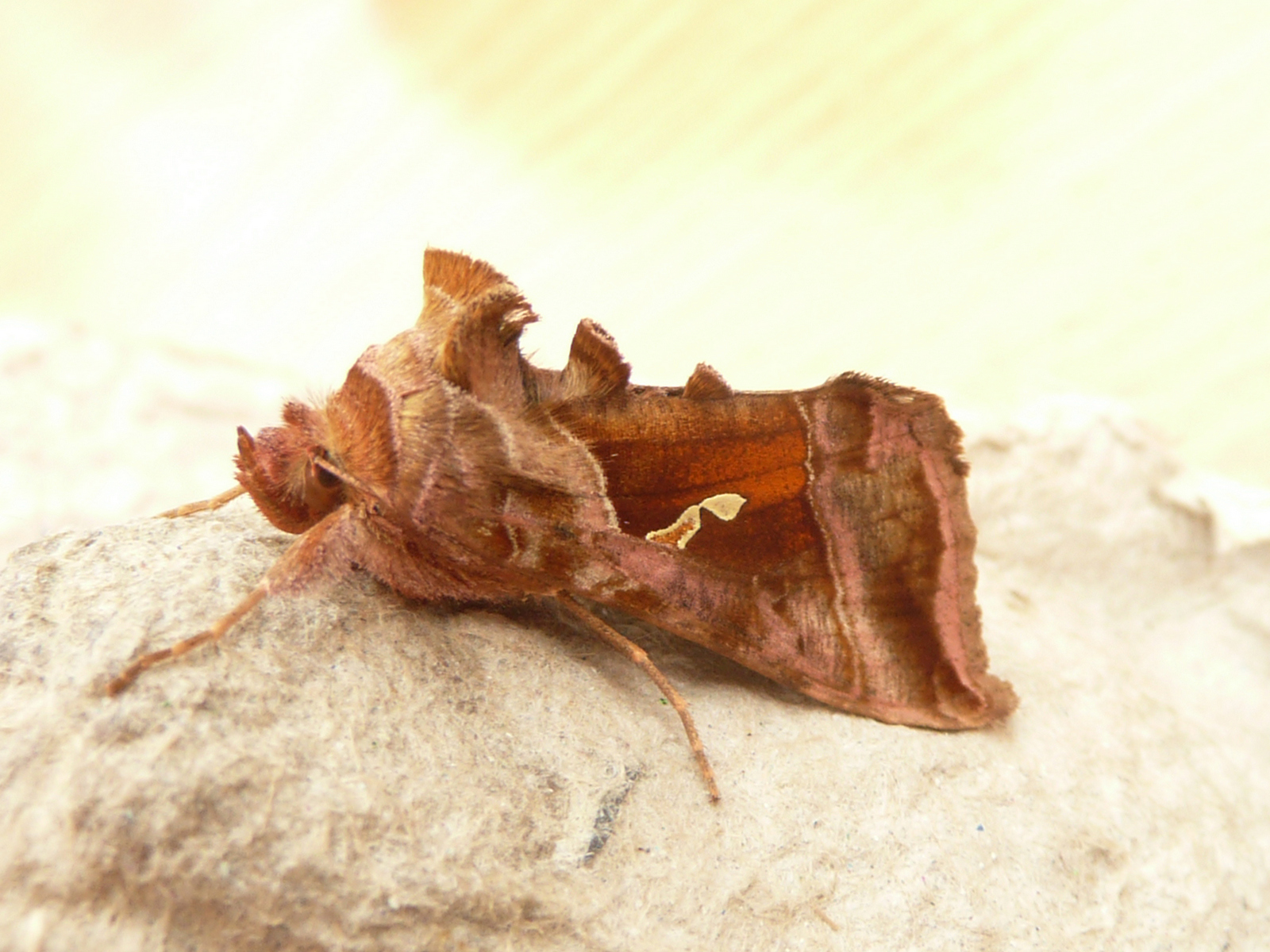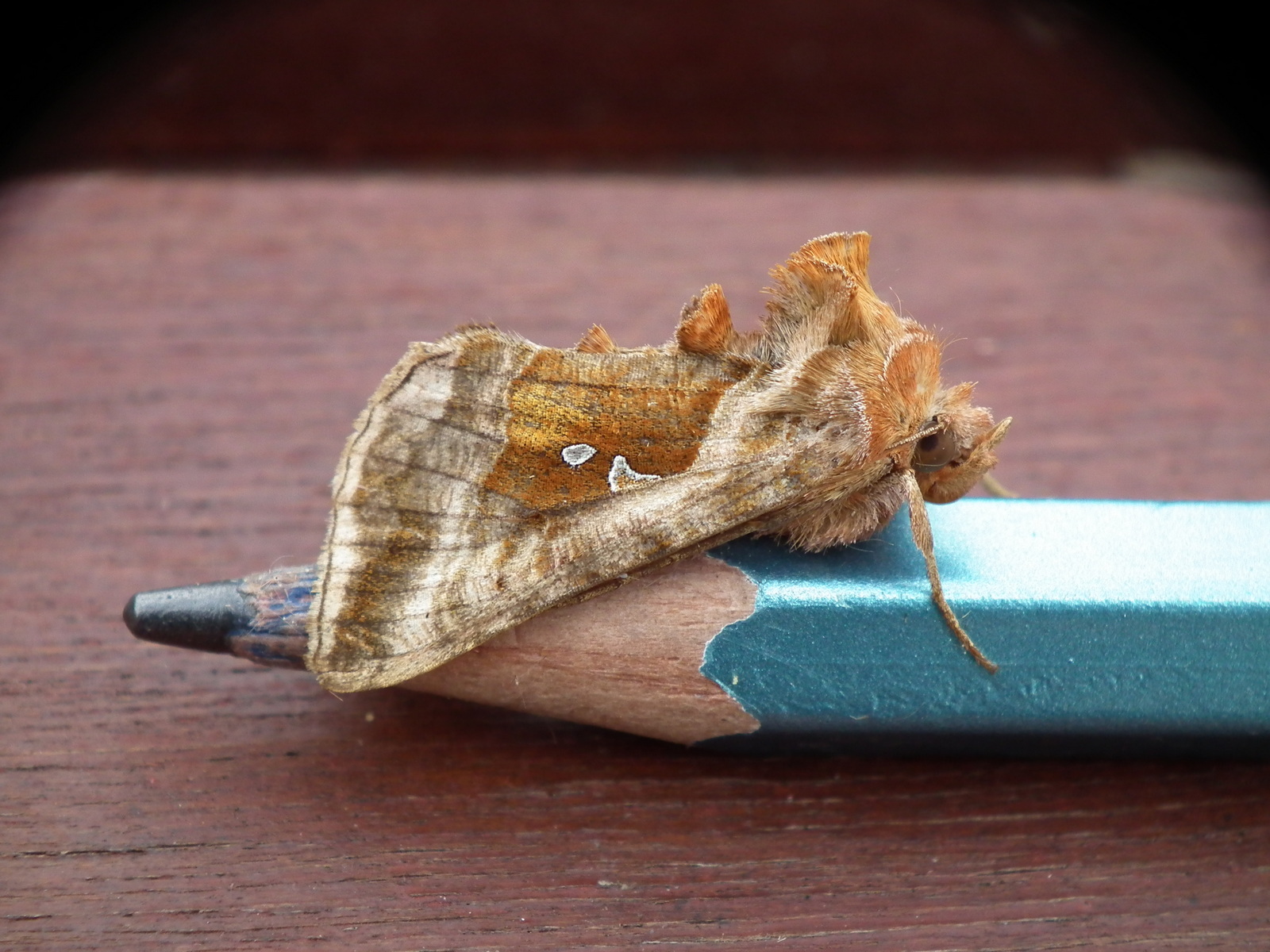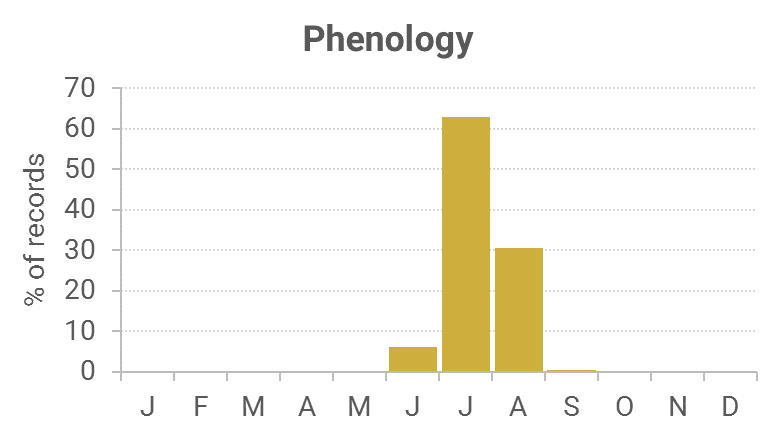Identification
Care required to separate from Beautiful Golden Y, but the key point is the kidney-mark not being edged with gold, also the slightly larger size, with a lighter, redder forewing. More information here.
Recording Method.
Attracted to light and can be seen feeding on flowers at dusk.
Life cycle
One generation. Overwinters as a small larva, during August to May, in leaf litter. It pupates from a cocoon attached to a leaf on the foodplant.
Larval foodplants
Nettles and Honeysuckle.
Habitat
A wide range of habitats including woodland, hedgerows and gardens.
History
The earliest notification of this species is published in Stephens (1829) with the Rev. William Little recording it at Raehills (VC72).
Lennon (1863) had found it at the Crichton Institution, Dumfries, where he worked. Gordon (1913) had found it not uncommon on honeysuckle, in damp places near the Malzie Burn, and at dusk in his garden at Corsemalzie, Wigtownshire. Earliest date was 30th June 1897.
Sir Arthur Duncan (1909-84) during his lifetime had found it at Closeburn and Tynron (VC72). In the mid 1960s Pelham-Clinton found it at Caukerbush and Kirkbean (VC73).
During 1974-93 there were a hundred records recorded from all of the Rothamsted stations. On the Hensol Estate it was regularly recorded in the early 1980s.
From 1992 to 2010 there were three hundred records with more than half of them from the regular trapped sites at Kirkton, Durisdeer, Cally Woods and Kirkcudbright, with the rest from widely scattered sites across the region.
There is one record of the form percontationis Ochsenheimer where the Golden Y mark is joined, it was trapped at Irvine House Lodge (VC72) on 5th August 1973.

